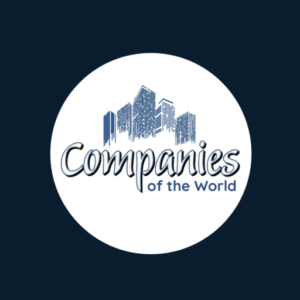In the intricate world of finance, the major asset managers are so powerful that as of June 2024, they had $34 trillion in Assets Under Management, a mind-boggling figure that is more than the annual GDP of North America; being the economies of the United States, Canada, and Mexico combined.
Their vast Assets Under Management (AUM), influential investment strategies, and involvement in economic policy decisions make them integral to the functioning of global markets.
The asset managers have a broad range of clients who entrust them with trillions of dollars to invest and grow. Their clients include; endowment wealth funds, pension funds, hedge funds, private equities, and individual wealth.
Through the custodial power of their clients, these companies own a piece of the most valuable companies in the world with percentages ranging from 1% to 10%. They have ownership in the biggest tech companies, the biggest media companies, the biggest pharmaceutical companies, the biggest food companies, the biggest oil and gas companies, and the biggest mining companies across the world.
While it is true that their clients invest in predetermined index funds, Exchange Traded Funds (ETFs) and mutual funds that deny the asset managers the power to indiscriminately move those investments from one company stock to another, the significant holdings in these companies give them immense influence at the corporate governance level given their custodial voting rights.
The significant economies of scale realized by these asset managers allow them to deliver highly competitive fees to their clients, which further solidifies their dominance in the asset management industry.
However, their immense influence also attracts scrutiny and criticism, highlighting the complex balance between financial power and responsibility. As these firms continue to grow and evolve, their impact on the economy and society remains a topic of significant interest and debate.
Here are the five most influential and largest asset managers globally in 2024.
1. BlackRock – $10.5 Trillion AUM
BlackRock is the largest asset manager in the world with over $10.5 trillion in AUM. Major contributors to its AUM include pension funds like the California Public Employees’ Retirement System (CalPERS), sovereign wealth funds, and institutional investors globally.
BlackRock was founded in 1988 by a group of eight partners led by Larry Fink, who remains its CEO. Initially part of the private equity firm Blackstone Group, BlackRock spun off as an independent company in 1992.
The company’s ascent to the top has been marked by a series of strategic acquisitions. Key milestones include the 2006 acquisition of asset manager Merrill Lynch for $10 billion, the 2009 purchase of Barclays Global Investors, which included its iShares exchange-traded funds business for $13.5 billion, the 2023 acquisition of Kreos Capital, a leading venture and growth debt provider in Europe and Israel, and the 2024 acquisition of Global Infrastructure Partners (GIP).
In 2020, the company became the first global asset manager licensed to start a wholly owned onshore mutual fund business in China, after receiving approval from China Securities Regulatory Commission (CSRC).
Another of Blackrock’s breakthroughs was developing an investment risk analysis software called Aladdin. Initially developed in 1988, before a 1999 upgrade, Aladdin is a technology platform used by most asset managers and owners including banks, financial institutions, pensions, corporations, insurers, and wealth managers to analyze and predict market trends.
As of the latest reports, BlackRock’s market capitalization is approximately $110 billion, with annual revenues surpassing $19 billion. The firm’s earnings have been bolstered by its diversified offerings, from active to passive investment products, including the highly popular iShares ETF range.
To underscore Blackrock’s influence on corporations, the company has been known to push for adherence to an Environmental, Social, and Governance (ESG) framework, which emphasizes critical issues such as climate change and diversity in leadership.
Larry Fink, the CEO of Blackrock, has been vocal about urging corporations to embrace and report on various ESG initiatives.
In January 2018, he wrote a letter to the CEOs of the companies in which Blackrock invests, urging them to focus not only on financial returns but also on making a “positive contribution to society”, a move that highlighted the considerable sway these asset managers have over their investments.
Exxon Mobil, a major oil and gas entity responsible for around 2% of global emissions, as highlighted by an Open Secrets analysis, has encountered BlackRock’s influence on this front.
In response to climate activists’ pressure, BlackRock which owns about 7% of the company, influenced the replacement of three Exxon Mobil board members in 2021.
The company would later pledge to achieve a 70%-80% reduction in methane intensity across its operations by 2030 and eliminate routine flaring by 2050, to align with the World Bank’s Zero Routine Flaring Initiative.
However, this Blackrock-backed ESG movement has faced considerable backlash, particularly from climate activists, who argue that many companies adopt these initiatives more for marketing purposes than genuine commitment, leading to accusations of greenwashing.
Blackrock’s reach extends far beyond the realm of well-known corporations, infiltrating government fiscal policies and the operations of central banks.
During the 2008 financial crisis, the US Federal Reserve enlisted Blackrock to manage billions in assets from the failed Bear Stearns and American International Group.
This partnership raised eyebrows, as Blackrock was tasked with pricing these assets for sale while simultaneously advising the private clients who would ultimately purchase them.
Fast forward to the COVID-19 pandemic, and the Federal Reserve once again sought Blackrock’s expertise to stabilize the economy through a substantial bond-buying initiative that included billions in commercial mortgage-backed securities and investment-grade corporate bonds.
These significant roles not only generate substantial fees for Blackrock but also enhance their influence, given their intricate connections within the global financial landscape.
2. The Vanguard Group – $9.5 Trillion AUM
The Vanguard Group oversees over $9.5 trillion in assets, with substantial contributions from retirement accounts, institutional investors, and individual investors. Major clients include large pension funds and university endowments.
Founded in 1975 by John C. Bogle, Vanguard Group pioneered the concept of low-cost index fund investing, essentially democratizing investing for individuals who previously could not afford to diversify into several stocks.
Bogle launched the first index investment trust, the Vanguard index fund in 1976. Designed to maximize shareholders’ long-term profits, the Vanguard index fund initially struggled to take off, only managing to raise $11 million of a targeted $150 million, but seven years in, it had accumulated $100 million in assets and proved to be a reliable and cheaper vehicle for investors.
By 1988, Jack Bogle had built the Vanguard index fund with its many low-cost fund portfolios to over 1 billion dollars At the turn of the millennium, the Vanguard Group went hard on adopting the relatively new concept on Wall Street called Exchange Traded Funds (ETFs). As the name suggests, an ETF is a fund that trades on an exchange like the New York Stock Exchange or the NASDAQ market. Today, the Vanguard Group is one of the biggest ETFs.
Vanguard is unique among asset managers in that it is owned by its funds, which are in turn owned by their shareholders, creating a mutual structure that aligns the interests of the firm with those of its investors.
The market valuation of Vanguard is not in the public domain given that it is privately held. However, it generates significant revenue, estimated at around $6 billion annually, primarily from management fees on its extensive portfolio of mutual funds and ETFs.
Vanguard’s passive investment philosophy has significantly influenced the investment industry, driving a shift towards low-cost index fund investing. Critics argue that this passive approach can lead to excessive concentration of power in a few large firms, potentially distorting market dynamics and corporate governance.
Vanguard’s portfolio is heavily weighted towards equities and bonds, with a substantial portion invested in U.S. stocks, government securities, and corporate bonds. Its focus on broad-market index funds means it holds a diverse array of companies across various sectors.
3. Fidelity Investments – $5.5 Trillion AUM
Fidelity manages over $5.5 trillion in assets, with major contributions from individual retirement accounts, 401(k) plans, and institutional investors. Its vast client base includes both retail and institutional investors.
Established in 1946 by Edward C. Johnson II, Fidelity was one of the first mutual funds to deploy a diversified investment strategy. Ed Johnson was a pioneer in hiring salespeople to sell mutual funds like you would move door to door selling television sets.
By the late 1980s to early 1990s, under the stewardship of Peter Lynch, Fidelity was the uncontested king of mutual funds, courtesy of its Magellan Fund, which was consistently achieving annual returns of more than 29%.
While Fidelity Investments remains a family-controlled company, with significant ownership still held by the Johnson family, over the years it has grown through innovation and acquisitions, including the purchase of Luminex Trading & Analytics and eMoney Advisor.
The company’s annual revenues of approximately $22 billion. The firm’s profitability is driven by its wide range of services, including brokerage, retirement services, wealth management, and life insurance.
Fidelity has a strong influence on the financial industry, particularly through its extensive research and technology-driven investment strategies.
Fidelity’s investment portfolio spans various asset classes, including equities, fixed income, and alternative investments. It has significant holdings in technology, healthcare, and consumer discretionary sectors.
4. State Street Global Advisors – $4.5 Trillion AUM
SSGA manages approximately $4.5 trillion in assets, with significant contributions from pension funds, sovereign wealth funds, and central banks. Key clients include the Japanese Government Pension Investment Fund (GPIF) and large U.S. state pension plans.
State Street Global Advisors (SSGA) was founded in 1978 as the investment management division of State Street Corporation, one of the oldest financial institutions in the United States. SSGA is known for creating the first exchange-traded fund (ETF), the SPDR S&P 500 ETF, in 1993.
As part of State Street Corporation, SSGA contributes to the parent company’s market capitalization of around $30 billion and annual revenues of about $12 billion. SSGA’s revenue is primarily derived from management fees and securities lending.
SSGA is influential in promoting governance and stewardship practices, particularly through its Fearless Girl campaign advocating for gender diversity on corporate boards. Critics, however, argue that its dual role as a major investor and a corporate governance advocate can lead to conflicts of interest.
SSGA’s portfolio includes a wide array of ETFs and index funds, with significant investments in global equities, fixed income, and commodities. It has a strong presence in the technology, financial, and healthcare sectors.
5. Morgan Stanley – $4 Trillion AUM
Morgan Stanley manages around $4 trillion in assets, with significant contributions from high-net-worth individuals, institutional investors, and retirement accounts. Major clients include large corporations, pension funds, and government entities.
Morgan Stanley was spun off from JP Morgan in 1935 following the enactment of a 1933 Glass-Steagall Act that barred commercial banks from engaging in investment banking activities.
Outside being at the forefront of fundraising billions for the US government to finance the 2nd World War, the investment bank is best known to have led US Steel’s $100 million bond sale in the late 1930s and 1940s.
In the 1950s, it managed bond issues for the World Bank and IBM and was the first investment banker to deploy computers in the 1950s to analyze financial data.
In 1997, Morgan Stanley Group, Inc. merged with Dean Witter Discover, resulting in the creation of one of the world’s largest financial services companies: Morgan Stanley Dean Witter & Discover Co. However, in 1998, the firm decided to simplify its name by removing “Discover Co.” and followed up in 2001 by dropping “Dean Witter” as well.
During the 2000s, the company thrived under John Mack’s leadership, enjoying a robust phase of profitability fueled by the surge in mortgage-backed securities. However, this success was abruptly halted when the market collapsed in 2008.
On the brink of bankruptcy during the 2008 economic crisis, Morgan Stanley borrowed $10 billion through the Troubled Asset Relief Program set up by the U.S. Treasury Department, $107 billion from the Federal Reserve, and a further $9 billion from Japan’s largest bank, MUFG.
It then tapped on James Gorman as CEO, a Wall Street outsider whose previous experience working at Mackenzie involved helping companies cut costs and create value.
James Gorman oversaw 1,600 job cuts and millions of dollars in cost reduction, while refocusing Morgan Stanley’s business towards asset management rather than trading before embarking on a path of expansion acquiring retail brokerage firm, Smith Barney in 2009, and both online broker, E-Trade and fund manager Eaton Vance in 2020.
As a publicly traded company, Morgan Stanley has a market capitalization of approximately $150 billion and annual revenues exceeding $60 billion. The firm’s profitability is driven by its diversified operations, including investment banking, wealth management, and trading.








